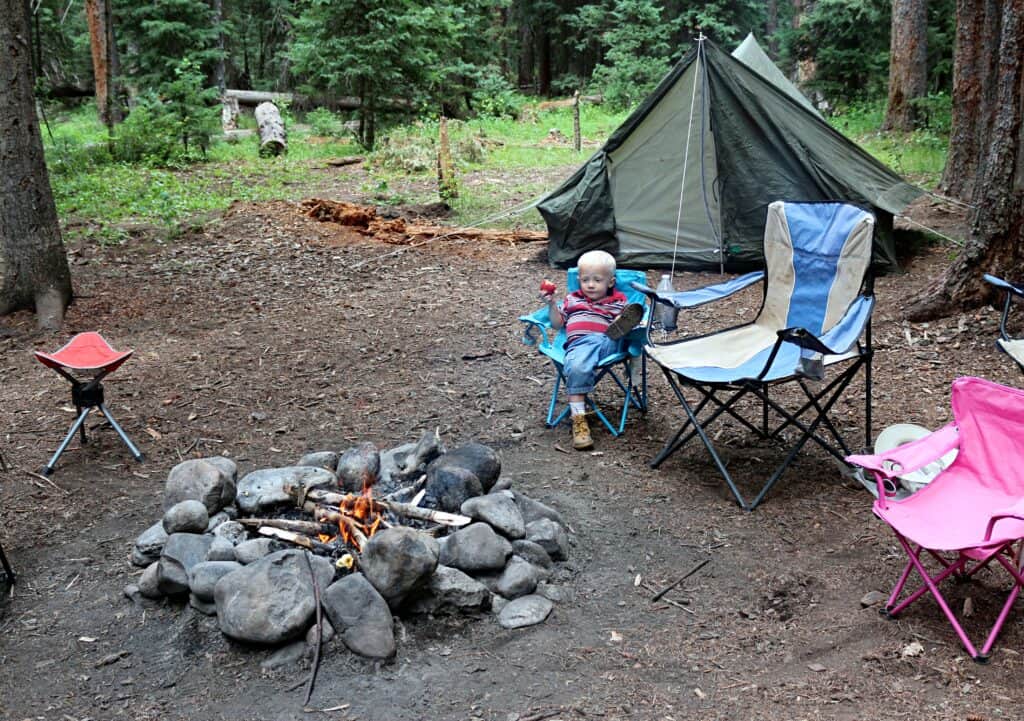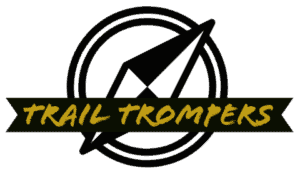Have you heard people talking about the different types of campsites and aren’t sure what they’re talking about?
The three types of campsites are full hookup sites, dry sites, and dispersed sites. Full hookup sites are used by RV campers and have water, electric, and sewer connections. Dry sites have no connections but are located in a developed campground. Dispersed sites are not located in campgrounds and have no amenities of any kind.
We enjoy all of these types of campsites, depending on our circumstances and what kind of camping trip we’re planning.
The Three Types of Campsites
While there are many different ways to classify campsites, the ones that are used most commonly are based on the type of amenities and services that are available. Campgrounds range from resort-style facilities with pools, golf courses, pickleball courts, and neatly paved sites to public areas with little more than vault toilets and fire rings. Which kind of camping you prefer will depend on your needs, your family’s camping style, and how much wilderness you enjoy.
Full Hook-Up Campsites and When You Might Use Them
Full hookup campsites have water, electric, and sewer connections for RVs. Most private campgrounds and many public ones have full hookup sites available. Most full hookup campsites are used by RV campers, but some also allow tent campers.
RV Campers and Full Hookup Sites
RV campers often seek out full hookup sites. Without hookups, many features in RVs don’t work. For example, we can’t run our camper’s air conditioner off our battery, so we have to run the generator if it gets too hot. Running the generator is loud, smelly, annoying, and expensive.
Full hookups also come with water connections, so campers can wash their dishes, take showers, and flush their toilets without running out of water. Finally, RV campers can dump their storage tanks whenever they need to if they have a full hookup site. For RV campers, full hookup sites are the best option on longer camping trips or in hot or cold weather.
Tent Campers and Full Hookup Sites
Most tent campers will have no need for full hookup sites, and since they often cost more to stay in, it makes sense for tent campers to avoid them. Occasionally a tent camper will use a full hookup site, such as when it’s the only site available or when they need to camp in a specific campground or area. However, for most tent campers it isn’t important to have hookups.
In fact, full hookup sites can sometimes be a disadvantage for tent campers. These sites are usually designed for RVs, so they often have long gravel or concrete pads that tent campers don’t need. They’re usually surrounded by other RV sites and often have less privacy than tent campers might want. When we’re in an RV, we feel more secluded from other campers even while outside, because we have the large wall of the camper between us and much of the campground. When we’re tent camping, we usually prefer to have trees or bushes between us and our neighbors, something that’s harder to find in full hookup sites.

What Are Dry Campsites?
Dry campsites are located in established, developed campgrounds but don’t have any hookups. They have no water or electricity on the site and there is no place for RV owners to empty their storage tanks. These campsites are usually much cheaper than full-hookup campsites but aren’t always ideal for RV campers.
In addition to dry campsites, you will often find sites with partial hookups. Campsites with water and electricity but no sewer are common, as are campsites with electric pedastels alone. For RV campers, the practicality of these campsites depends on their individual rig, how prepared they are for off-grid situations, (such as whether or not they have solar panels and a generator) as well as the temperature and how long they will be staying in that site.
RV Campers and Dry Campsites
RV campers can use dry campsites as long as they’re prepared to camp without water and electric hookups. Many RVs are designed to be used without hookups for a limited time and have water tanks, generators, batteries, and even solar panels to make it easier.
We have camped in many dry campsites with our RV and it takes a little advance preparation in order to make sure you have what you need. You need to fill up your water tank before you leave, or stop and fill it when you get there (many campgrounds with dry sites have water available in a communal area.) Also, make sure you have a plan for cooling or heating your camper if needed. Finally, make sure that you understand what parts of your electrical system will run off your battery, generator, or solar system.
Tent Campers and Dry Campsites
Dry campsites are usually ideal for tent campers (in fact, they’re often called tent sites for this reason). Most tent campers do fine without having water or electrical hookups, although it is nice to have running water available somewhere in the campground. Tent campers usually bring water with them and plan to do their cooking on a camp stove, a grill, or over a fire.
If you are planning to camp in a dry campsite, check with the campground to find out what amenities are available. For example, are there bathrooms with showers and running water, or are there only vault toilets? Is there potable water available in the campground? This will help you plan what you need to bring. Make sure you know where you can get water and ice nearby- a gas station or grocery store, for example.

Uncompagre National Forest, Colorado.
Dispersed Campsites: Finding and Using Them
Dispersed campsites are those that aren’t in a regular developed campground. Not all public land allows dispersed camping, but some agencies, particularly the US Forest Service and Bureau of Land Management, are well-known for allowing you to camp throughout their land. Of course, there are restrictions on where you can camp and what you are allowed to do, but in general, the regulations are very supportive of dispersed camping.
Finding dispersed campsites, however, can be a bit trickier. If I’m looking for a place to camp in an area I don’t know well, I start by reading the regulations for that management area so I know what’s allowed and what restrictions are in place. Then I look on the management agency’s website to see if they have any recommendations on sites (many dispersed sites become well-used over the years and become almost like developed sites with fire rings and parking areas.)
I also utilize the satellite picture on Google Maps to identify areas where others have camped. You can usually spot these areas because they have clearings and sometimes parking areas are visible. Other times you can actually see campers and tents in the satellite picture. I also use resources like Campendium and Freecampsites.com to find recommended areas.
Insider Tip: Try to find two or three possible options in the same area: If you only pick one, you may arrive and find it already occupied. Always have a backup or two.

Ashley National Forest, Utah.
RV Campers and Dispersed Campsites
It’s surprisingly easy to go RV camping in dispersed sites as long as your camper is equipped for some off-grid use. The hardest part is finding sites that are level and your camper can fit in. Those with shorter campers and camper vans will have an easier time. We sometimes struggled to find a place to park our 38′ fifth wheel, but we still managed to camp in many dispersed sites across several states in the West.
Insider Tip: Use google maps with the satellite picture to zoom in on prospective boondocking sites. This can help you to get an idea of the terrain and if your camper will fit.
We always check the road before we leave with our large RV. We use Google Maps, atlases, and other tools to make sure we won’t get our rig stuck somewhere on a narrow road or in an area where we can’t turn around. If we are uncertain, we use our chaser vehicle to scout out the road before taking the RV down it. Most people don’t have chaser vehicles, so be extra cautious. Read online reviews on camping websites if you can find them, and pay special attention to the size of the reviewer’s rig.
Tent Campers and Dispersed Campsites
Tent camping in dispersed sites is even easier than RV camping, but you have to plan differently. For example, in most RVs it’s easy to manage food storage, dealing with trash, and using the bathroom. When you’re tent camping in a dispersed site you’ll have to handle these things differently and be better prepared.
It’s also easier for tent campers to get into small campsites and navigate the sometimes-tricky back country roads you will find in national forest and BLM land. If you’re camping in a car or other vehicle with lower clearance, pay attention to ruts, roots, and rocks in the road. Many roads in these areas are considered four-wheel-drive roads and you should check reviews and information on the agency’s website before planning your route, especially if it’s recently rained or it’s in a shoulder season.

Conclusion
Knowing more about the three types of campsites can help you make better choices for your family, avoid unpleasant surprises, and have the best camping trip possible.

